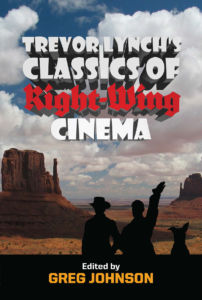The Dead Don’t Hurt: A Viking Western
The Dead Don’t Hurt — the new Western directed, produced, written, and starring Viggo Mortensen, begins not with a showdown but a mounted knight in armor making his way through a forest. Then the camera cuts away — not to a showdown, but to Weston Jeffries (Solly McLeod), who is in the process of completing a mass murder in a saloon, then knocks off a slow-on-the-trigger deputy for good measure. These scenes are very much part of the story, and the film dispenses with linear plot in order to create a visual essay on the West, America, and nobility — both in terms of human independence and making spiritual deals with a strange land.
Viggo is Holgar Olsen, a Danish carpenter. He meets Vivienne Le Coudy (played by an energetic and feisty Vicky Krieps) on the dock in San Francisco. She’s selling flowers and he’s sitting, reading a book. Vivienne is buying fish. She dreads an art dealer she’s seeing, bored and irritated with his genteel talk as he describes killing a whale. Holgar is unassuming, smiles, and unlike the merchant’s endless blather about class and status in the high-flown formal language of the era, Holgar says few words. Language or its simplification is a major theme in this film.
“Why did you come to San Francisco?” Vicky asks.
“I wanted to see the end of the world,” Holgar says with a smile.
Holgar entices Vivienne to join him in northern Nevada — not as a wife, but as a companion. She asserts her freedom, but joins him. Her character is a strong rope that holds the film together, Holgar is the rock the rope is wrapped around. It’s not really a feminist film, but shows in a thoughtful and exciting way how a nineteenth-century woman comes to terms with a foreign and moody frontier.
Holgar’s world is a small cabin on an open field under the shadow of a cliff. Vivienne frowns. “You live like a dog.”
Holgar smiles. “A happy dog.”
Their give and take builds the story. Vivienne grafts herself into Holgar’s world. She plants flowers. A new tree stands next to the cabin. He begins to build a barn. Their talk and emotions match the engagement of their eyes on each other. In the middle of nowhere, they make a somewhere.
There is another somewhere: the town of Elk Flat. In keeping with the true Western tradition, it is controlled by a troika of a banker, the ruthless landowner, and the latter’s brother Weston, dressed in black and prone to devastating rages. Weston is a problem, but his fury can be dealt with later. What matters now is empire-building.
Vivienne and Holgar can do without Elk Flat. I was impressed with how the film deals with immigrants in America, who feel themselves to be slowly unrolling their pasts. The Americans, meanwhile, are rapacious and brutal, often couching their maneuvering and finagling in polite language and correct grammar, much like the polite diplomatic language that precedes a declaration of war. Joe Biden and his ilk would be very happy in Elk Flat.
Holgar and Vivienne show little interest in becoming Americans. Their relationship is with each other and the land, and the film features beautiful, lonely scenery that reduces men to dots on the terrain. A soulful cello haunts and intensifies the film’s moods; the score score was written by Mortensen himself. This is the only Western I’ve seen where the baroque piece “La Folia” is used. The delicacy of music, like language, underscores Holgar and Vivienne’ beauty.
Empire-building ends up destroying the couple’s balance, however. Vivienne is determined to get a job in town, and she goes to Weston’s saloon. She doesn’t want to be a hooker, but a barmaid. Her quiet and determined bargaining wins her the job. Weston is at turns surprised and amused, and his consent seems like a victory for Vivienne, but it also opens a trap door as she becomes part of Elk Flat and its noble citizen’s dominion. Holgar had done some carpentry work for them, but keeps his distance. Vivienne doesn’t.
The empire-building continues as one night, some Union soldiers arrive to raise volunteers to fight in the Civil War, which is just beginning. Elk Flat is defiantly unenthusiastic about the war effort, but Holgar looks past the saloon’s crowd with the same distant gaze he cast at the dock, and decides to enlist.
This infuriates Vivienne. “This doesn’t concern you,” she fumes.
“It’s a war against slavery,” he says, and that settles it.
She almost shouts at him as rides off, then sobs.
Holgar’s newfound sense for fighting injustice didn’t just appear out of nowhere. He had fought in Denmark against the Prussian invasion of his country, and wears a medal he was awarded for bravery. He feels that his experience can be of some use. Vivienne’s experience of war, by contrast, is bitter. She recalls that, as a girl in Canada, her father fought in some sort of resistance against the English, which only got him hung by the redcoats. Vivienne’s independence was reinforced by her mother teaching her about knights and Joan of Arc, the woman who brought down the first British empire that was built by Henry V.
Now alone, Vivienne becomes a target. Weston goes to the cabin one night and rapes her. She is bruised and shattered, but the next day goes to work at the saloon in a gesture marking a sullen defiance that leaves Weston speechless. Showing her black eye and a cut on the cheek she gave him. Vivienne has won a quiet victory — a Joan of Arc moment against the empire.

You can buy Trevor Lynch’s Classics of Right-Wing Cinema here.
Vivienne gives birth to a child, and when Holgar returns from the war, he is surprised to find the five-year-old, but not outraged. The couple’s give and take continues, and when Holgar finds out Weston raped Vivienne, she demands he not seek vengeance. He accepts, but after this there is an uneasy truce between Holgar and Elk Flat.
The banker summons Holgar, telling him the town needs as Sheriff, and big money has decided that he is the man. Holgar reluctantly pins on the badge — not that he fears anything, because he is at all times quietly courageous, but he doesn’t like being defined by the town and following the road they have chosen for him.
The cabin starts to look better. The tree grows, the flowers bloom, and the boy is taught carpentry and writing, But Vivienne dies — not violently, but from syphilis resulting from Weston’s rape. Once she is dead, Holgar settles his bill with Elk Flat and its harsh but sweet-talking aristocracy as he silently pays off his rent, and then, next to the stack of coins, plunks down his badge. They’re disappointed to find someone who isn’t for sale. But there is one last debt to pay, and Holgar takes the boy and rides off to find Weston.
His first attempt is in a forest where Weston is hiding, but he outmaneuvers Holgar and escapes. Then we have the showdown, set in a magnificent rock formation rising above the men, causing them to appear like gray pawns on a cosmic chessboard. The climax is more like ritual animal slaughter than fancy gunfighting. Once his work is done, Holgar rides off with the boy, only stopping when they reach the endless, roaring Pacific. Holgar calmly studies it, and the boy asks what it is. “The end of the world,” says Holgar.
The Dead Don’t Hurt has been compared to Clint Eastwood’s Unforgiven, and the film’s quiet, studious style and indictment of civic nihilism recalls High Noon. The conflict between the town and Holgar is a reprise of a standard theme in Westerns, where embattled townspeople, having lost their liberty but unable to retake it, look to a gunfighter to restore law and order. Yet, Holgar is not a reformer. He is at all times an outsider, and there is no rejoicing by the townspeople when he takes charge. They are almost nonexistent in the film except at a trial for the mass shooting that is shown at the start of the film, where the “killer,” a cowboy who can barely talk, is hung for Weston’s acts. The verdict is bought and paid for. Some of the townspeople speak out but are called to order by the judge, who bangs not a gavel but the butt of his revolver, showing what kind of justice Elk Flat has. The people are sullen, but they accept this state of affairs. Holgar the decides that Elk Flat is beyond help. The issue is decided, and it’s time to move on. Elk Flat’s innate corruption seems almost made for our era as our national Elk Flat decays before our eyes.
I was impressed with the film’s use of language. The characters have their own, hidden languages as well. Vivienne sees Holgar writing, for example, and wants to read it, but it’s in Danish. Weston is annoyed when Vivienne speaks to the piano player’s daughter in Spanish, and then French. Similarly, the simplicity of Holgar and Vivienne’s conversation and sentiments are contrasted with the refined language of Elk Flat’s leaders and Weston’s irritability as he tells everyone to just speak English.
I call this a Viking Western — not because of its excessive violence, but because Mortensen’s story and theme recalls the other side of the Vikings: the explorer and traders who settled many parts of the world in a dynamic sense of curiosity and determination that is truly Aryan. They are warriors, but they are also visionaries opening up the world. Likewise, Holgar is a stranger in the West and never really becomes part of the American system because he’s one such visionary himself, living outside the bloodletting and corruption of frontier America. He and Vivienne thrive in spite of it, but the empire, in the form of both the Civil War and Elk Flat, kills their bond.
Holgar prefers to commune with the great wilderness, both on his own and with Vivienne. He returns, as his ancestors did before him, to the sea. “The end of the world?” No, it’s his essence. When Holgar looks out at the roaring Pacific, he looks beyond the West to what’s on the other side. I could see him sailing to Hawaii or China. His Viking spirit is ready to move on.
I was glad to see a Western featuring a Germanic character, since these peoples played a large role in settling the West. I was reminded of Alex Linder’s masterful review at VNN of Ride with the Devil, where he described Duchy Roedel, the German descendant who becomes a bushwhacker. As Linder put it:
Germans are very stable people; they make great neighbors and soldiers. It is unfortunate that their character and mentality is generally such that they can be very easily misled because they lack the imagination or cunning to see that things political cannot be taken at face value. Too often in pop culture we get the tiresome chirpy cherry peppy Irish type. Nothing is wrong with this type, it’s just that fuck the Irish. There are other people out there who like to see themselves represented once in a while.
I think this film does that in matching Mortensen’s quiet Viking with a French-Canadian woman who, unlike him, has had to make her peace with an empire, both national and in terms of gender. I was also very happy there were no obligatory blacks in the film.
Before I saw The Dead Don’t Hurt, I took a walk in Lafayette Square, one of St. Louis’ oldest parks. In it is a statue to Thomas Hart Benton, one of Missouri’s first senators, a man devoted to westward expansion. His daughter married John Fremont, another western expansionist. On his statue are inscribed the words: “There is the East; there is India.” Benton saw beyond western settlement to linking up with the Orient. Holgar is a man of this stripe. He is ready to seek a vision, and takes his boy with him. If Vivienne becomes one with the earth she nurtured and sought to make fruitful, Holgar is a man of the sea, ready for a new world beyond the waves. This is a reversal of the male/female principle, but such is Mortensen’s playful, enquiring Viking.
If, as this film contends, you have to choose between the American Dream or the end of the world, I’ll go for the latter.




